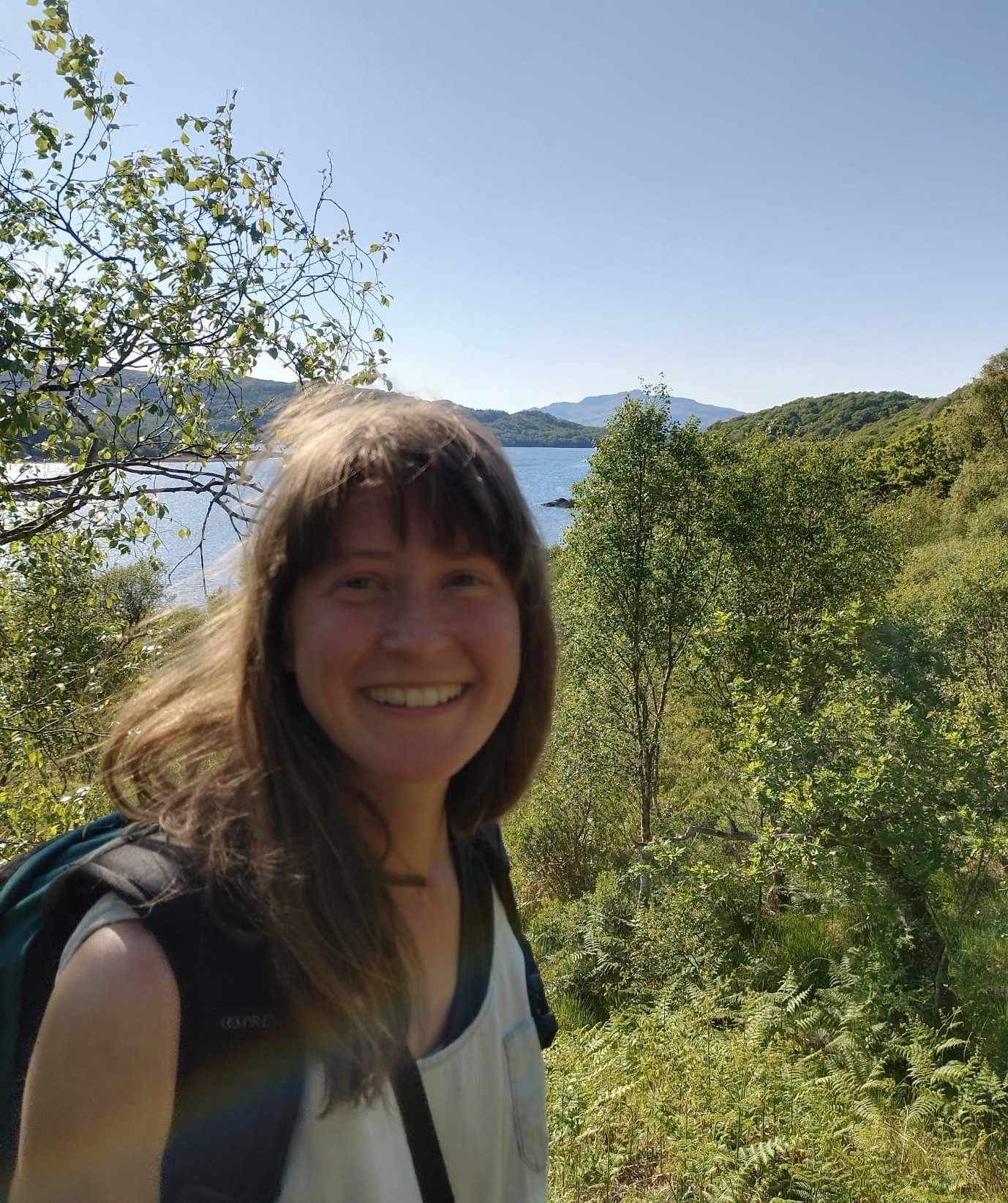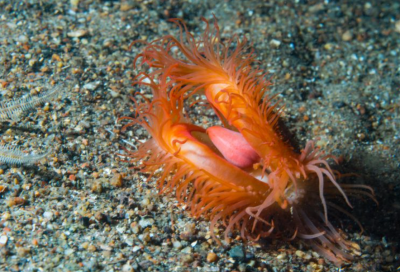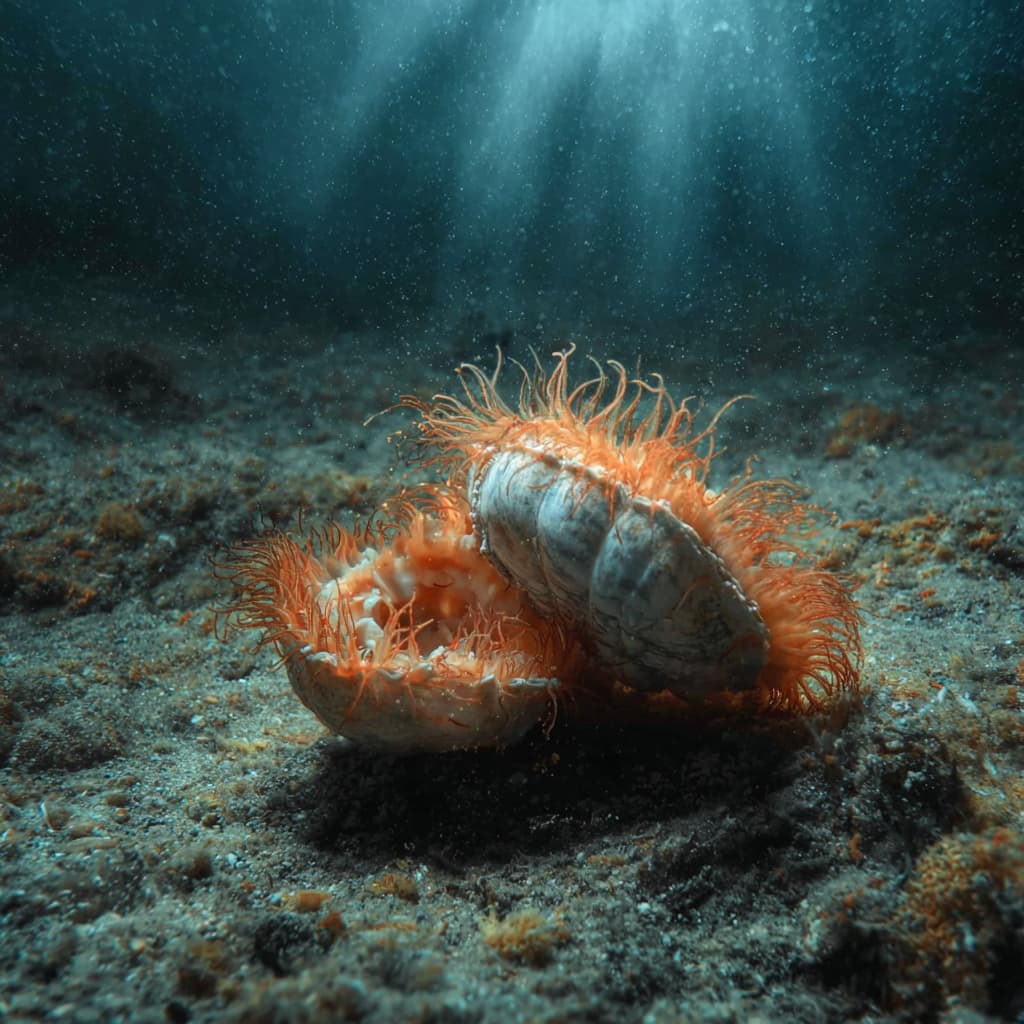
Helen WoolstonFlame Shell
Beautiful bivalve molluscs found in a few West Coast sea lochs of Scotland, with an eccentric flick of flame-orange tentacles protruding from their shell. I chose to champion them as there are local populations close to my home within the Argyll Hope Spot, in Loch Sunart and Loch Creran. Further north, Loch Carron is home to what is believed to be the biggest Flame Shell bed in the world. Beautiful wonders lie under the surface of our waters, and that is one of the reasons many seabed species are threatened: they are not commonly seen by the humans who live nearby, so it can go unnoticed if their populations and habitats are damaged. I want to learn more about the marine communities close to me in order to champion and protect them. If we don’t know they are there, how can we care when they are lost?
Flame Shells have a huge ecological importance: as they cannot retract their mantles and tentacles, they protect themselves by hiding within nests. They swim around collecting shells and gravel in their tentacles, which they bind together using strong, sticky filament secretions called byssal threads. Over time, the nests expand and overlap, creating expansive mats of beds. These beds are habitat to 265 invertebrate species, 19 algae species and provide important protection for developing cod young and scallop spat. The flame shell beds also stabilise the seabed, and aid with carbon sequestration and nutrient cycling within the water.
There used to be significant communities of Flame Shells in the Clyde, Loch Sween and around the Isle of Man, but no more, their overall population is in decline. Some beds are now within designated Marine Protected Areas, but outside these areas they can be damaged by fishing techniques which scrape the seabed, such as scallop dredging. Sadly, even within MPAs there continue to be reports of illegal dredging. This poses a significant risk to seabed habitats and organisms, many of which take a very long time to recover, if at all. In the words of a local contact of mine, this damage to animals such as flame shells has meant that “the sea around here has become a desert.”
Flame Shells have been identified as a Priority Marine Feature in Scotland, for their conservation importance. Their IUCN status is: rare, of concern.

To stand beside, I am learning about these and other incredible marine species who also call the West Coast of Scotland home. I will be spreading the message of them and their importance, and will include them (or references to them) in future art projects using animation, puppetry and mask. In early September 2025 I am taking part in the Argyll Hope Spot Snorkelling Residency, where I will develop skills in gathering underwater inspiration from marine habitats, with the aim to raise awareness of the diversity and critical importance of underwater ecosystems, including Flame Shell beds and others. There will be a follow-up group exhibition of residents’ work in 2026.

